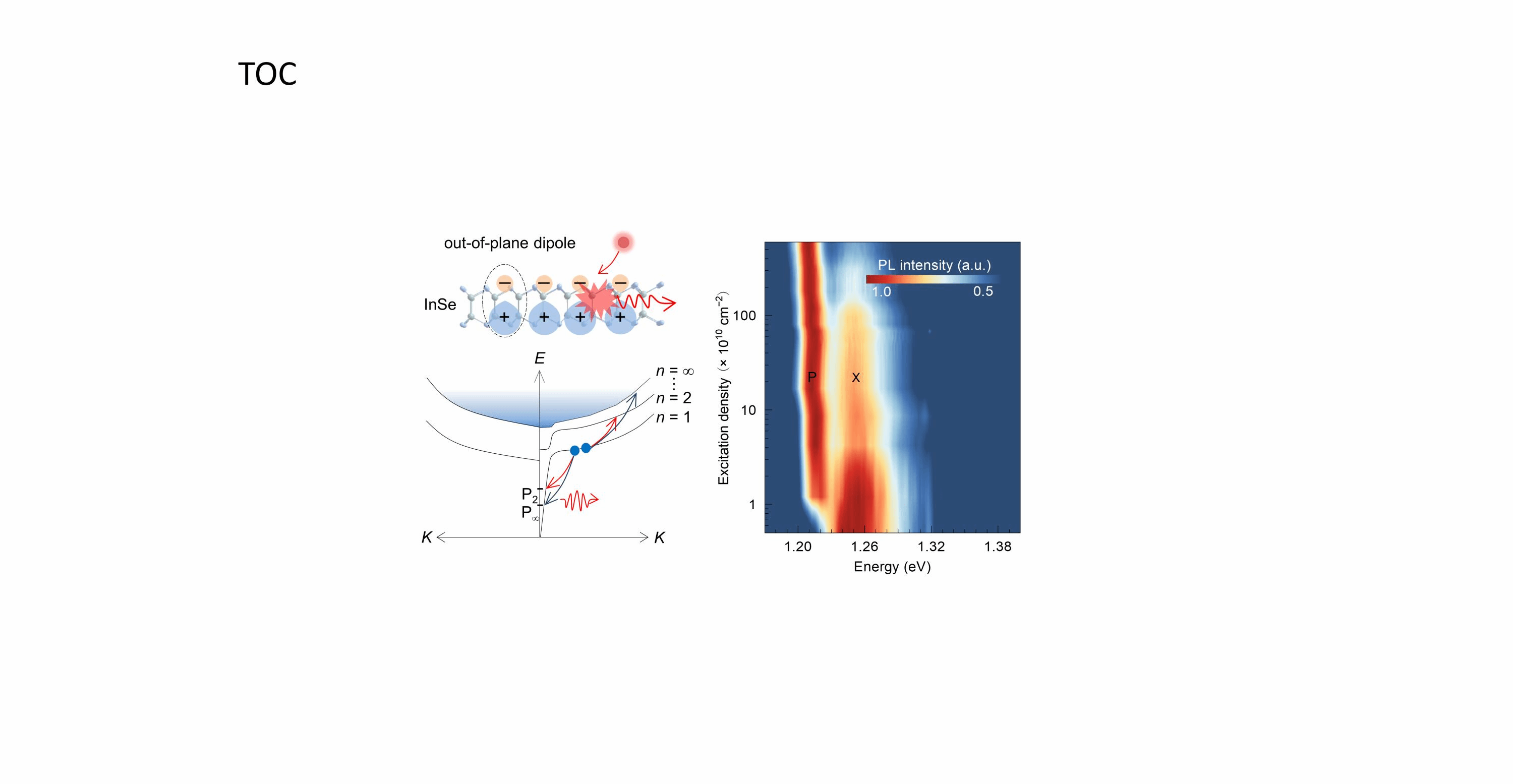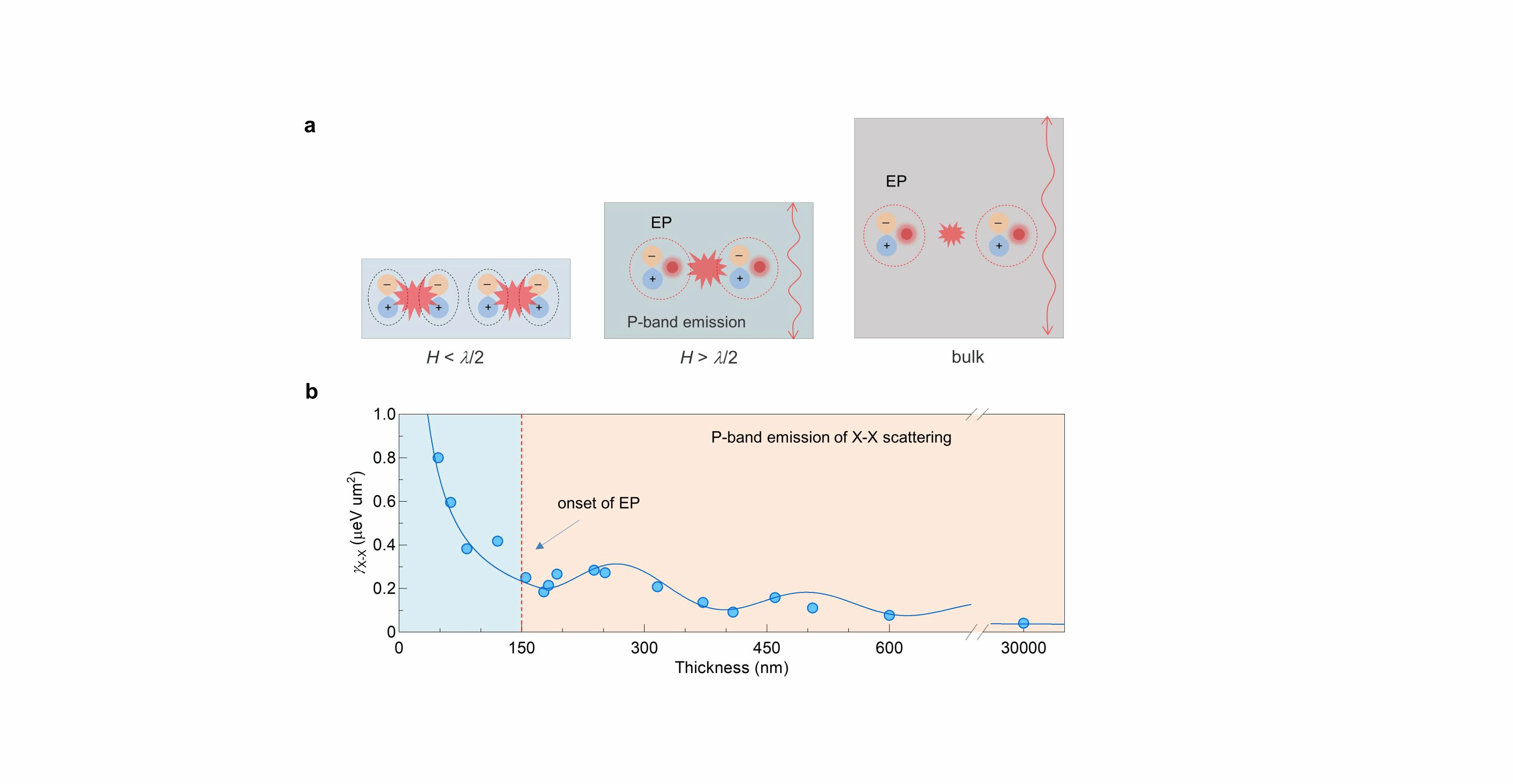Recently, Qing Zhang's research group from the School of Materials Science and Engineering at Peking University utilized two-dimensional layered InSe materials to achieve room-temperature continuous-wave exciton−exciton scattering-induced emission, elucidating the underlying physical mechanism and establishing the correlation between scattering strength and thickness. This provides a new approach for the design of superlinear low-coherence light sources. The research results were published on April 21, 2023 in Nano Letters, with the title "Strong Exciton−Exciton Scattering of Exfoliated van der Waals InSe toward Efficient Continuous-Wave Near-Infrared P-Band Emission" (DOI: 10.1021/acs.nanolett.3c00932).
Superlinear low-coherence light sources hold great potentials in various fields such as speckle-free imaging, optical coherence tomography, and interferometric sensing. The exciton−exciton scattering-induced P-band emission is a type of superlinear low-coherence emissionwithout the prerequisites of population inversion or macroscopical coherence. Therefore, the theoretically-required excitation density is more than 2 magnitudes lower than those of other superlinear low-coherence emission processes such as amplified spontaneous emission, superfluorescence, and random lasing. However, in the well-explored semiconductor materials including III-V/II-VI compounds and transition metal dichalcogenide semiconductors, the exciton dissociation due to low binding energy or the exciton annihilation caused by exciton−exciton interaction leads to the low efficiency of exciton−exciton scattering-induced emission, which requires an excitation density as high as 1014cm−2so far.

Figure 1.Theexciton−exciton scattering mechanism and power-dependent PL spectra of P-band emission.
To address this issue, researchers utilized InSe material with 3D/2D exciton complex to achieve room-temperature continuous-wave P-band emission with excitation density as low as 1010cm−2(Figure 1). InSe has a large hole-to-electron mass ratio and a low effective mass of excitons, making the Coulomb interaction between excitons significant. In addition, the 3D excitonic properties effectively suppress exciton−exciton annihilation, and the 2D excitonic properties make excitons stable at room temperature. Furthermore, the out-of-plane transition dipole of excitons can effectively couple with TM-polarized photon modes, thereby forming exciton−polariton states as scattering final states for P-band emission. Power-dependent PL spectra show that P-band emission intensity increases quadratically with excitation density, and the P-band energy gradually redshifts with the increase of the excitonic final-state energy, which is consistent with the exciton−exciton scattering model (Figure 1). Thickness-dependent PL spectra show that the exciton peak and P-band energy are located on the exciton−polariton energy states near the exciton and photon branches, respectively. By fitting their dispersion curves, it is confirmed that exciton−polaritons participate in the P-band emission process.
Furthermore, by analyzing the linear relationship between the exciton peak linewidth and excitation density, the exciton−exciton scattering strength was extracted. As shown in Figure 2, the scattering strength of InSe microplates with thicknesses of 155 nm and 48 nm were 0.25 and 0.80 μeV μm2, respectively, higher than those of monolayer transition metal dichalcogenide materials. The scaling law between the scattering strength and the thickness of InSe is as follows: 1) when the thickness is less than half the wavelength, the exciton−exciton scattering strength is quite strong due to the spatial confinement. However, the P-band emission is inhibited due to the large photon loss, since the efficient P-band emission requires exciton−polariton states as scattered final states, which could not be formed if photonic modes are prohibited in this regime. As the thickness increases, the scattering strength gradually decreases due to the reduced spatial confinement of excitons. 2) When the thickness is greater than half the wavelength, strong exciton−photon coupling enables the onset of exciton−polaritons, providing the scattering final states for P-band emission, with the scattering strength proportional to the optical confinement factor and thus oscillating with increasing thickness. 3) In bulk materials, the enlarged spatial separation of excitons attenuates the X−X scattering and decreases the P-band emission efficiency. These findings provide routes for the engineering of exciton-enhanced optical nonlinearities.

Figure 2.The scaling law betweenexciton−exciton scattering strength and thickness.
Yin Liang, a Ph.D. student from the School of Materials Science and Engineering, Peking University, is the first author of the paper. Professor Qing Zhang, from the School of Materials Science and Engineering, Peking University, is the corresponding author. The work was also supported by Zhongming Wei from the Institute of Semiconductors, Chinese Academy of Sciences. The research was funded by the National Natural Science Foundation of China and the Beijing Natural Science Foundation for Distinguished Young Scholars.
Link: https://pubs.acs.org/doi/pdf/10.1021/acs.nanolett.3c00932